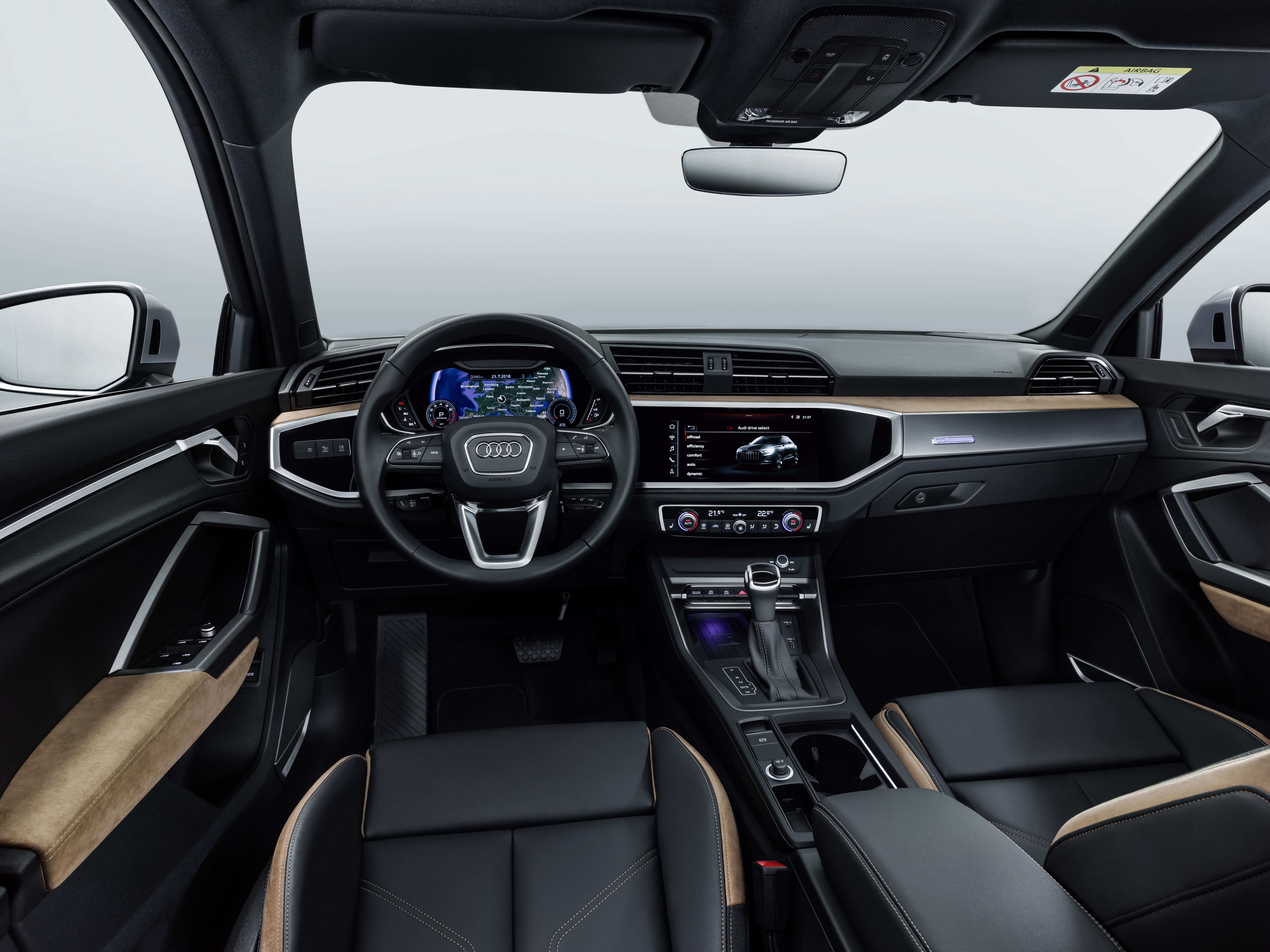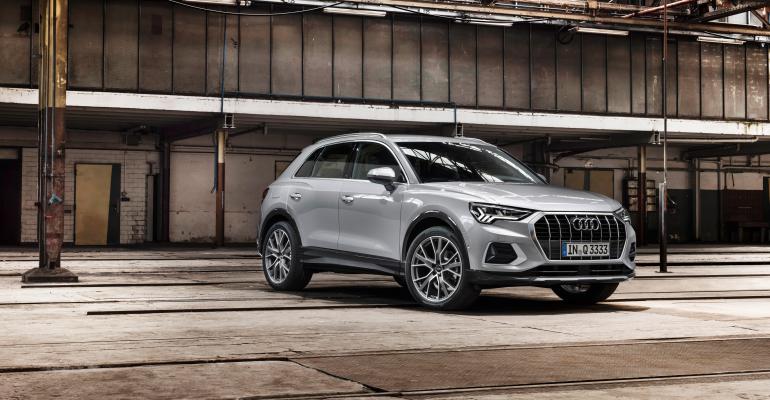Audi reveals the second-generation Q3 in a series of official photographs ahead of the compact CUV’s planned public debut at the Paris auto show in September. The CUV launches North American sales during first-half 2019.
The new Q3 has been re-engineered from the ground up in a bid to better compete against premium-brand CUV rivals including the BMW X1, Jaguar E-Pace and Lexus RX.
At the heart of the high-riding Audi model is the latest generation of parent company Volkswagen’s MQB platform. It replaces the outdated PQ35 underpinnings of the first-generation Q3 introduced in 2011, bringing with it a claimed improvement in mechanical packaging as well as greater levels of rigidity that endow the new model with enhanced levels of refinement, Audi contends.
Further developments for the successor to one of Audi’s strongest-selling models in recent years include a range of updated gasoline and diesel engines – the former using a particulate filter for lower carbon-dioxide emissions and the latter fitted with an improved SCR (selective catalytic reduction) filter for reduced nitrous-oxide emissions.
They are mated to revised gearboxes and, in selected upper-end models, a new electro-hydraulic multi-plate 4-wheel drive for what Audi describes as “improved levels of traction.”
With the Q2 now positioned below it in various markets, it is no surprise the Q3 has grown in size. At 176.6 ins. (4,486 mm) in length and 72.8 ins. (1,849 mm) in width, it is a significant 3.8 ins. (97 mm) longer and 0.7 in. (18 mm) wider than its predecessor. Height is reduced to 62.4 ins. (1,585 mm), a scant 0.2 in. (5 mm) over the first-generation model.
The increase in dimensions reflects a larger footprint. The wheelbase of the ʼ18-model-year Q3 is increased 3.1 ins. (79 mm) to 105.6 ins. (2,682 mm) while its front and rear track widths are up 1.3 ins. (33 mm) and 0.9 in. (23 mm) at 62.4 ins. (1,585 mm) and 62.1 ins. (1,577 mm), respectively.
The new Q3’s upmarket interior (below, left) includes a newly designed dashboard featuring digital instruments as standard within a 10.3-in. (26-cm) display operated through a multifunction steering wheel.
Additionally, the new Audi offers either a standard 8.8-in. (22-cm), or optional 10.1-in. (26-cm) and 12.3-in. (31-cm) MMI (Multi Media Interface), touchscreen displays within the upper section of the center console. Functions include navigation, maps, radio and internet connectivity for the myAudi app, which enables the driver or passengers to connect their smartphone to the new CUV.
 Audi claims the MMI used in the Q3 sets a new standard in the class. In its ultimate “navigation plus” form, it uses real-time data from HERE – the former Nokia digital mapping division now owned by Audi, BMW and Mercedes-Benz parent Daimler. Buyers of the new Q3 also can option it with LTE connectivity via a SIM card permanently installed in the dashboard.
Audi claims the MMI used in the Q3 sets a new standard in the class. In its ultimate “navigation plus” form, it uses real-time data from HERE – the former Nokia digital mapping division now owned by Audi, BMW and Mercedes-Benz parent Daimler. Buyers of the new Q3 also can option it with LTE connectivity via a SIM card permanently installed in the dashboard.
Along with improved connectivity options, Audi has pushed to make the new Q3 a safer car to drive. Standard equipment includes a new pre-sense front safety system. Using radar, it detects critical situations involving pedestrians, cyclists and other vehicles and provides the driver with a visual, audible and haptic warning. If necessary, it initiates emergency braking to avoid a collision.
Other standard equipment on the new Audi includes lane-departure warning, LED headlamps, air conditioning, Bluetooth connectivity, a light/rain sensor and adjustable speed limiter.
Audi says the new Q3 will offer two turbocharged gasoline engines and a single turbocharged diesel from the start of European sales later this year.
The 4-cyl. units are mated to either a standard 6-speed manual or 7-speed dual-clutch automatic gearbox and the choice of either standard front-, or optional 4-wheel, drive.
The gasoline engines start with an entry-level 1.5L unit delivering 148 hp in the Q3 35 TFSI. Above it is a 2.0L unit with 187 hp in the Q3 40 TFSI and, in a higher state of tune, 227 hp in the Q3 45 TFSI.
The sole diesel is a 2.0L engine with 148 hp in the Q3 35 TDI.
Audi confirms a more powerful version of the 2.0L diesel with 187 hp in a Q3 40 TDI model, though it is not planned to be available from the outset of sales.
The new Q3 will be produced at Audi’s Gyor factory in Hungary. European delivery is set for November. North American delivery isn’t planned to begin before second-quarter 2019.





